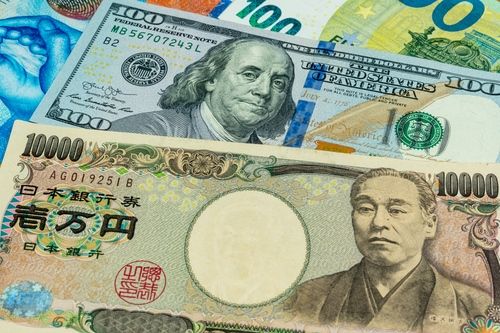Japan Selling U.S. Bonds to Defend the Yen? Japanese Yen Surges to 140 as Japan Defies U.S. Pressure
- Bitcoin Poised For ‘Boring’ 2025 Close – Here’s When BTC’s Real Test Will Come
- TradingKey 2025 Markets Recap & Outlook | Global Central Banks 2025 Recap and 2026 Outlook: Navigating Post-Easing Recovery and Diverging Paths
- Gold Price Hits New High: Has Bitcoin Fully Declined?
- Gold jumps above $4,440 as geopolitical flare, Fed cut bets mount
- Breaking: Gold rises to record high above $4,500 on safe-haven flows
- US Q3 GDP Released, Will US Stocks See a "Santa Claus Rally"?【The week ahead】

As the weakening of the dollar intensifies, the yen has strengthened, breaking through the 140 level. Meanwhile, one of the key players behind the "U.S. Treasury storm" that occurred after President Trump’s reciprocal tariff policy took effect in early April has been confirmed to be Japan. Analysts suggest that Japan’s sale of U.S. Treasuries is a strategic move to retain leverage against U.S. demands for yen appreciation.
On Tuesday, April 22, the U.S. Dollar Index (DXY) struggled below the 99 level, with the dollar-yen exchange rate briefly falling below 140, hitting a low of 139.89—the weakest level in nearly seven months. The yen has shown a strong upward trend over the past month, having been around 150 at the end of March.
The sharp appreciation of the yen is not what Japanese authorities hoped to see, as it erodes the profits of Japan’s export-driven companies. However, yen appreciation and dollar depreciation align with what Trump seeks, as this is considered a crucial factor for the revival of U.S. manufacturing.
Upcoming U.S.-Japan Currency Talks
Japanese Finance Minister Katsunobu Kato and U.S. Treasury Secretary Scott Bessent are set to negotiate on currency issues this week. However, according to Reuters, citing sources familiar with the matter, Japan will likely reject any demands to further strengthen the yen, and the likelihood of reaching a comprehensive agreement during these talks is slim.
The last time the U.S. exerted significant pressure on Japan to raise the yen was in 1985, when the famous Plaza Accord was signed. Combined with recent tough stances taken by Japanese Prime Minister Shigeru Ishiba in U.S.-Japan trade negotiations, this round of currency talks is unlikely to become the anticipated "Plaza Accord 2.0."
Is Japan Selling U.S. Treasuries to Prop Up the Yen?
During the U.S. Treasury market turmoil earlier this month, markets speculated that Japan, the largest holder of U.S. Treasuries, might have led the frenzied selling of U.S. bonds, potentially aiming to increase its negotiating leverage.
While Japanese authorities have denied deliberately selling U.S. Treasuries, the Financial Times confirmed market suspicions with data on April 22. In the week ending April 4, private institutions, including banks and pension funds, sold 17.5 billion long−term foreign bonds, followed by another 3.6 billion in the subsequent seven days.
This marked one of the largest two-week bond outflows since records began in 2005. Nomura Bank noted that a significant portion of the bonds sold by Japan were likely U.S. Treasuries or U.S. mortgage-backed securities (MBS).
The uncertainty brought by U.S. tariff policies is creating additional obstacles for the Bank of Japan’s plans for further interest rate hikes. If Japan wishes to weaken the yen while the central bank remains on hold, selling U.S. Treasuries and intervening in the currency market to buy yen could be an option.
Read more
* The content presented above, whether from a third party or not, is considered as general advice only. This article should not be construed as containing investment advice, investment recommendations, an offer of or solicitation for any transactions in financial instruments.



